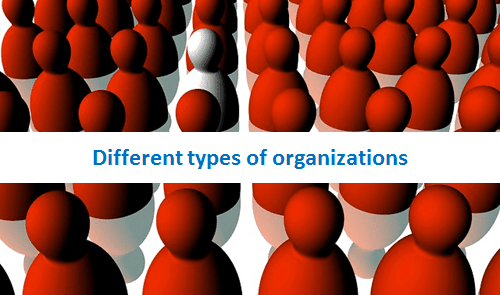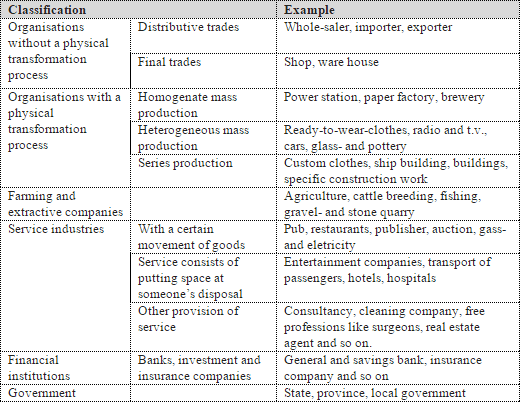
Organizations & assets
Organizations that offers services, for example a sea ferry or airline company, have assets (liner, aircraft) that are used for realizing organizational goals. They do not produce goods. An organization is more process- or more structure-oriented. Taking this approach, there exist, on a continuum, five basic types of organizations:
- Product-producing (they produce goods or services);
- Product-trading (they primarily trade products produced by other organizations);
- Service-based (they are primarily involved in lending services);
- Project-based (organizations that primarily sell knowledge);
- Second-based (organizations that hires people out with specific skills or knowledge).
Specific characteristic can make a difference
Every type of organization has some specific characteristic that can make a difference to the design of the user interface of business intelligence systems. Products and services generally have a fixed price as opposed to the price of projects. The complexity and duration of the project dictates the prices. Moreover, in the case of product-producing and product-trading organizations, an increase of employees (or equipment) is not directly beneficial for the accomplishment of the goals as opposed to project- and second-based organizations. Employees in project- and second-based organizations can generate their own business (they are, in fact, the product sold) and an increase of resources ought to lead to a growth of the total business (if the employee is well educated, experienced and healthy).
Specific types of organizations
This general division can be further outlined using a table of more specific types of organizations (Bemelmans, 1986):
Table: Classification of organization types

No direct conclusions can be drawn
Although this classification does not reveal any direct conclusions for the design of the user interface of business intelligence systems, it may be useful to derive other meta-information, which in turn can provide the means to derive concrete elements to be employed in the user interface.
Car insurance business
The mapping used to link elements of an abstract model to a concrete (user interface) model often takes in a knowledge-based system place by a chain of reasoning. In the car insurance business, for instance, knowledge-based systems are widely employed. Postal codes are not directly used to decide whether a policy should be accepted or not.
Instead, the postal code is used to ascertain whether the person lives in an urban or rural area. From there, the knowledge-based system inferences that people who live in an urban area have a statistically higher chance of being involved in an car accident. Combined with other data (age, type of car etc.) the system decides whether to accept the car insurance policy or not.
The chain of knowledge is yet unknown
I believe that such a chain of inferencing will be clearer, as our company will gain more insight in the different types of organizations. For now, no direct or indirect derivations can be made based upon the type of the organization. The chain of knowledge is yet unknown. However, when our company gains more insight into the different organizations, I expect this classification to be useful.
Primary process of the organization
Furthermore, each type of organization has its own important control variables which are dictated by the primary process of the organization (Leeuwen, 1996). Industrial companies control their business by measuring absence through illness, productivity and work force. Transport companies run their business by measuring stock and market share. Although these control variables ought to make up part of the steering model of the organization and be available in the business intelligence system, these important variables can be more effectively and more regularly communicated than other variables.
Obscure relationships
The following example may clarify the usefulness of the classification but will also show the still obscure relationship (the chain of reasoning) between an abstract property and a concrete user interface element. Example: product-producing and product- trading organizations are more likely to be influenced by seasonal patterns than project-based organizations. The interface control representing the time dimension could, in such organizations, be extended with seasonal time variance operations and fancy decomposition functions.

Value disciplines
Furthermore, the classification according to the knowledge management value disciplines should be considered as a source of useful information. Organizations that have a mission can often be related to one of the three disciplines. Although combinations are possible, each organization will focus upon one of the disciplines below to get the best performance:
- product leadership;
- customer intimacy;
- operational excellence.
Explanation of the disciplines
Product leadership organizations focus on the best and newest products. Here, innovation is quite important where traditionally the BSC-model places this perspective at the bottom of the screen.
Customer intimacy organizations focus on the best total solution for a limited group of customers. Again, the most important perspective for these organizations is the customer. Top five-customer lists can be an important source of information for the managers of these organizations, so why not present this list on the main window of the business intelligence system.
Organizations that focus upon operational excellence are optimizing the internal processes to achieve the best total costs and best combination of quality and price for customers.
No comments:
Post a Comment